A housing bubble. It’s a term you’ve probably heard tossed around, especially when the real estate market gets a little too hot. But what exactly is it? A housing bubble occurs when home prices rise rapidly, often driven by speculation, easy credit, and high demand. It’s a bit like blowing up a balloon—at first, it grows steadily, but eventually, if you keep pumping air into it, the balloon gets overstretched and bursts.
source: MHFIN on YouTube
Overview of Housing Bubbles
Historically, housing bubbles have left a trail of economic wreckage in their wake. Take the 2008 U.S. housing crisis as a prime example. What started as a booming real estate market, fueled by subprime mortgages, ended in one of the most severe financial downturns in modern history. The aftermath was brutal, with millions losing their homes and the economy spiraling into a deep recession. And it wasn’t just homeowners who were affected—the ripple effects reached renters, landlords, and entire communities.
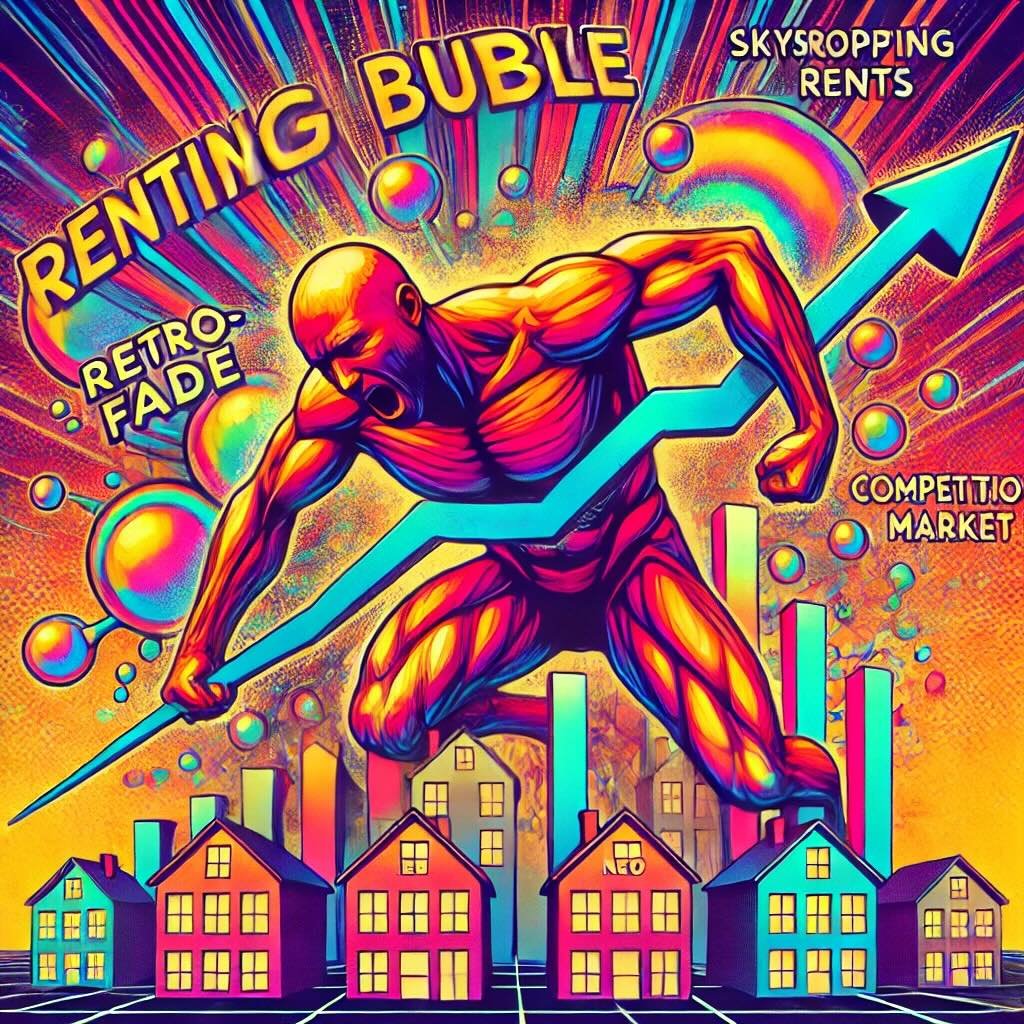
Importance of Understanding Rental Market Dynamics
Now, you might be wondering, why focus on rental markets when discussing housing bubbles? Because rental markets play a crucial role during these turbulent times. When buying a home becomes too expensive or too risky, more people turn to renting. This shift can have significant impacts—not just on renters, but on landlords and the broader housing market as well.
We’re going to explore what happens to rental markets during a housing bubble. We’ll dive into the effects on renters, who often face skyrocketing rents and tougher leasing conditions. We’ll also look at how landlords and property investors navigate these choppy waters, and what it all means for the housing market as a whole. By the end, you’ll have a clear understanding of the dynamics at play and why it’s essential to consider rental markets when discussing housing bubbles.

The Relationship Between Housing and Rental Markets
Housing Market Dynamics and Rental Demand
When home prices start soaring, the dynamics of the rental market shift dramatically. As housing becomes more expensive, fewer people can afford to buy, pushing more would-be homeowners into the rental market. This surge in demand for rental properties can create a competitive atmosphere, driving up rental prices.
There’s an inverse relationship at play here. When buying a home becomes out of reach for many, renting suddenly looks like the better option. People who might have been saving for a down payment or considering a home purchase find themselves priced out, turning to rentals as the next best thing. This increased demand can make finding an affordable rental a real challenge, especially in hot markets where housing prices are already high.
Supply and Demand in Rental Markets
Now, let’s talk about supply and demand—two forces that play a huge role in the rental market. When demand for rentals rises, as it often does during a housing bubble, the availability of rental properties can become a problem. If there aren’t enough units to go around, prices start to climb. It’s a simple equation: more renters chasing fewer units equals higher rents.
But supply isn’t just about the number of units available—it’s also about the type and location of those units. New construction can help alleviate some of the pressure, but it often lags behind demand, especially in rapidly growing areas. And existing rental stock, while plentiful in some regions, may not meet the needs of an influx of renters looking for specific types of properties or locations.
The result? A rental market that’s tight, competitive, and expensive. Renters may find themselves paying more for less, competing with others for the same properties, and facing limited choices. For those on the lower end of the income scale, this can lead to housing insecurity and increased financial strain, further exacerbating the divide between those who can afford to buy and those who can only rent.

Impact on Renters
Rising Rental Prices
During a housing bubble, rental prices almost always spike. As more people get priced out of the home-buying market, they flood the rental market, driving demand—and consequently, prices—through the roof. It’s a tough pill to swallow for renters who suddenly find their monthly payments creeping higher and higher.
For many households, these rising rents put a serious strain on their budgets. Rent starts to eat up a larger portion of income, leaving less room for other essentials like groceries, healthcare, or savings. This phenomenon, known as rent burden, can push families to the brink, forcing them to make tough choices just to keep a roof over their heads.
Decreased Affordability and Housing Insecurity
As rental prices climb, affordability plummets. The gap between what people earn and what they need to pay for housing widens, making it harder for even middle-income earners to secure affordable rentals. For low-income renters, the situation is even more dire. They face the highest risk of being pushed out of their homes, either because they can no longer afford the rent or because landlords are eager to cash in on the bubble by raising prices or selling properties.
This leads to housing insecurity, where renters live in constant fear of eviction or displacement. The stability they once had—knowing they had a home to return to each day—starts to crumble. For those living paycheck to paycheck, even a small rent increase can be enough to tip the scales, forcing them to move, often to less desirable or more crowded living conditions.
Changes in Rental Agreements
As the rental market heats up, landlords often tighten the screws on rental agreements. You’ll see shorter lease terms, as landlords look to capitalize on rising rents by adjusting prices more frequently. Gone are the days of long-term stability; renters might find themselves renewing leases every six months, with each renewal bringing a fresh wave of anxiety about potential rent hikes.
Additionally, rental conditions become more stringent. Landlords can afford to be choosier, setting higher income requirements, demanding larger security deposits, or imposing stricter rules. The result? Increased competition for available units. In some cases, this even leads to bidding wars for rentals, where prospective tenants offer to pay above the asking rent just to secure a place to live. It’s a landlord’s market, but for renters, it’s a struggle just to keep up.
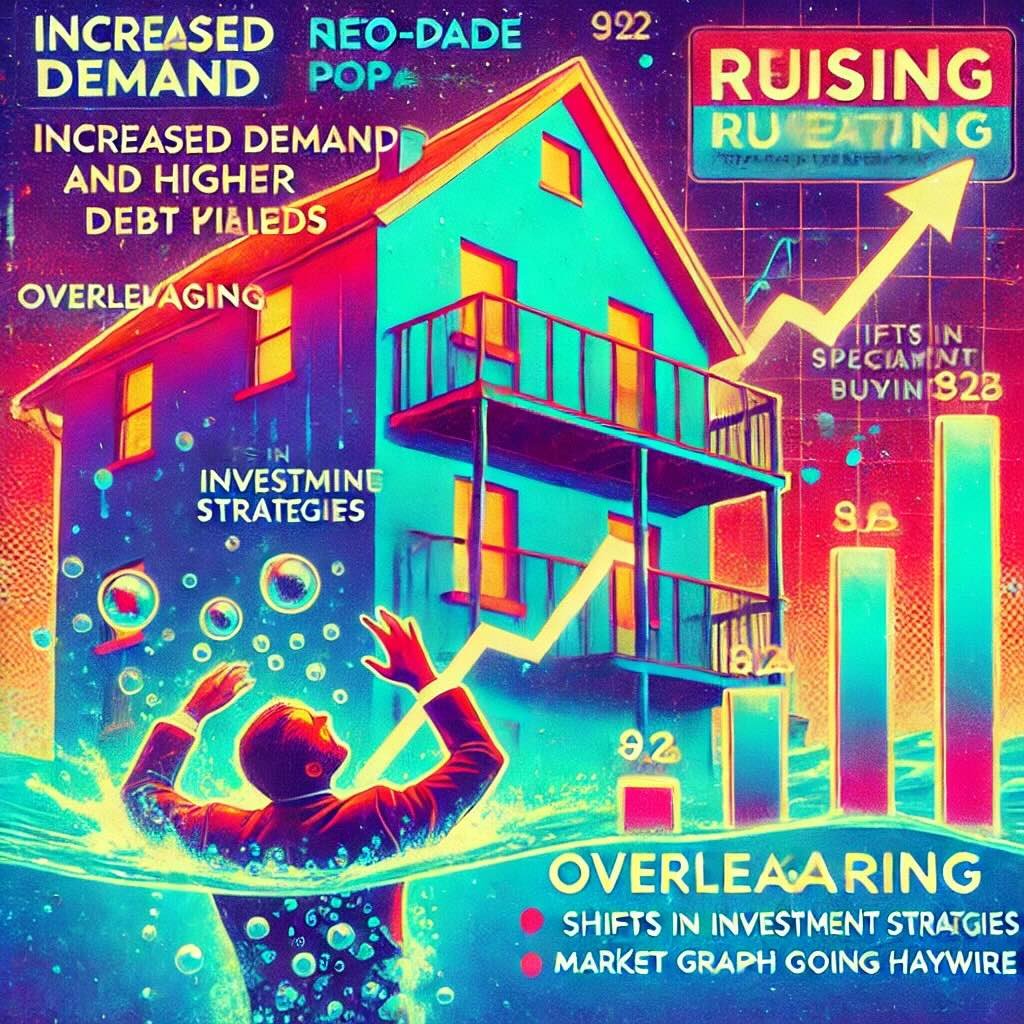
Impact on Landlords and Property Investors
Increased Demand and Higher Yields
For landlords, a housing bubble can feel like a golden opportunity. As home prices soar and more people turn to renting, demand for rental properties skyrockets. This increased demand drives rents higher, and landlords find themselves in a strong position to capitalize. It’s tempting—almost irresistible—to raise rents and maximize profits, especially when renters are competing fiercely for available units.
Higher rents translate into higher yields, making rental properties even more attractive as investments. Landlords who play their cards right can see substantial returns on their properties, especially if they’re able to lock in long-term tenants at inflated prices. It’s a time of plenty for those on the right side of the market, but this rush to profit can also create a precarious situation.
Risks of Overleveraging
With the potential for high returns, some landlords and property investors get caught up in the excitement of a booming market and take on more debt than they can realistically manage. Overleveraging—borrowing too much relative to the value of the property—becomes a common risk during housing bubbles. It’s easy to see why: with property values and rents climbing, taking on more debt might seem like a calculated risk.
However, this strategy can backfire dramatically if the bubble bursts. When property values decline, landlords who are overleveraged may find themselves underwater—owing more on their mortgages than their properties are worth. The fallout can be severe, leading to financial distress, forced sales, or even foreclosure. The dream of high yields can quickly turn into a nightmare when the market corrects, leaving overleveraged landlords in a precarious financial position.
Shifts in Investment Strategies
During a housing bubble, the allure of rental income can shift investment strategies across the board. Investors increasingly turn to rental properties, seeing them as a safe bet in a volatile market. The idea is simple: as long as people need a place to live and can’t afford to buy, they’ll rent—and that means steady income for property owners.
However, this rush to invest can lead to speculative buying—purchasing properties not for their long-term value, but for the quick profits that can be made in a rising market. Speculative investors might buy up multiple properties, driving prices even higher and further inflating the bubble. The impact on the rental market can be significant, as these speculative purchases can reduce the availability of affordable rental units, pushing prices up even more.

Broader Market Implications
Gentrification and Community Displacement
Gentrification. It’s a word that carries a lot of weight, especially in cities where housing bubbles have taken hold. When rental markets heat up, the pressure can accelerate gentrification in neighborhoods that were once affordable for long-term residents. Rising rents push out those who’ve called these areas home for years, making way for wealthier newcomers who can afford the inflated prices.
The result? Communities are transformed, often drastically. Long-time residents find themselves displaced, forced to move to less expensive, and often less desirable, areas. The cultural and social fabric of neighborhoods can fray as the people who gave them character are priced out. It’s a process that can leave lasting scars, as the sense of community that once defined these areas slowly erodes.
Long-Term Effects on Urban Development
Housing bubbles don’t just reshape neighborhoods—they can also have profound impacts on urban development as a whole. When prices soar, developers rush to capitalize on the demand, often focusing on high-end, luxury projects that promise the highest returns. This can skew the development landscape, leading to an overabundance of expensive housing while affordable options become increasingly scarce.
In the long term, this focus on high-end development can create imbalances in the housing market. Cities may find themselves with plenty of luxury units but not enough affordable housing to meet the needs of all residents. This can lead to polarized urban environments, where the wealthy have access to prime real estate, while lower-income residents are pushed to the fringes. Urban growth becomes uneven, with certain areas flourishing while others languish, creating deep divides within cities.
Post-Bubble Market Corrections
So, what happens when the bubble bursts? Rental markets don’t just bounce back overnight. After the frenzy of a housing bubble, the market often undergoes a period of correction, where prices stabilize—or even decline. For renters, this can bring some relief, as the intense competition for housing eases and rents begin to fall.
However, the correction can also bring its own set of challenges. Landlords who overextended themselves during the boom may struggle to cover their costs, leading to property neglect or even foreclosure. In some cases, cities might see a wave of vacant units as speculative investors pull out, leaving behind properties that no one wants to rent at the previous high prices.
In the best-case scenario, a post-bubble correction could lead to more affordable rents and a healthier rental market. Rent stabilization might occur naturally as the market adjusts to the new reality. But in the worst case, the correction could exacerbate existing issues, leading to increased vacancy rates and further displacement if landlords decide to sell off properties or convert them to other uses. The aftermath of a housing bubble is complex, and its effects on rental markets can be unpredictable, often depending on how severe the bubble was and how well the market adapts to the new conditions.
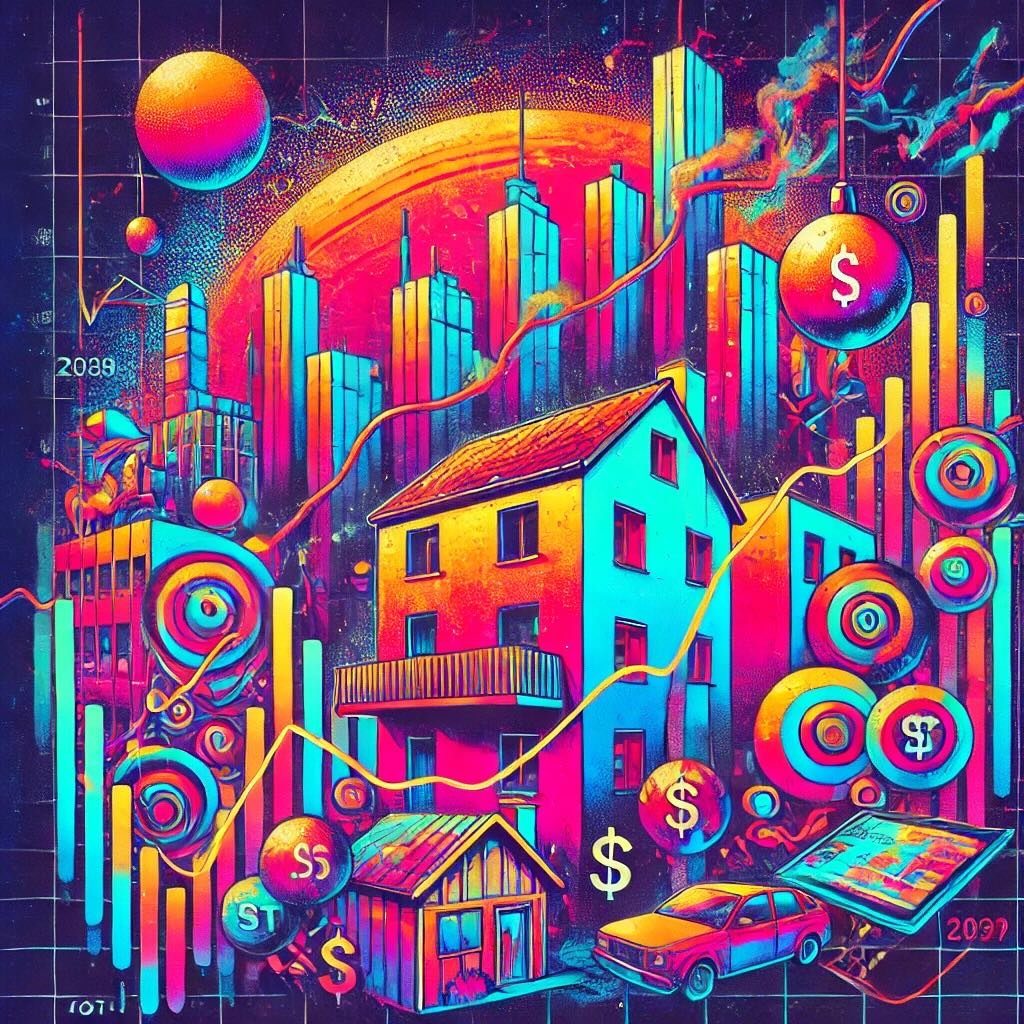
Case Studies: Real-World Examples
2008 U.S. Housing Crisis
The 2008 U.S. housing crisis is often remembered for the foreclosure wave that swept the nation, but its impact on rental markets in major U.S. cities was just as significant. As homeownership became out of reach for many, demand for rentals surged, especially in urban areas where buying was already expensive. This sudden spike in demand led to rapidly rising rents, particularly in cities like New York, Los Angeles, and San Francisco. For renters, the post-crisis landscape was tough, with many struggling to keep up with the increased cost of living.
In the long term, the crisis left a lasting mark on rental prices. Rents remained elevated in many major cities, even as the housing market slowly recovered. Renters found themselves squeezed, with fewer affordable options and little room to negotiate. The crisis also shifted the dynamics of urban living, with more people renting for longer periods, delaying homeownership, or abandoning the idea altogether. It highlighted the fragility of the rental market in times of economic distress and underscored the need for policies that protect renters in volatile housing environments.
Spain’s Housing Bubble (Early 2000s)
Spain’s housing bubble in the early 2000s offers another compelling case study. During the boom years, property prices in Spain skyrocketed, driven by speculative investments and easy credit. As homeownership became less attainable, the rental market experienced its own set of challenges. Renters faced rising costs, as landlords sought to capitalize on the hot market by hiking rents. The bubble burst in 2008, leading to a dramatic downturn in the housing market and leaving many landlords and renters in a precarious position.
Post-bubble, the dynamics of Spain’s rental market changed significantly. Rental prices plummeted in many areas, particularly in regions that had seen the most speculative development. However, this didn’t necessarily translate to increased affordability. Many properties were left vacant, and the economic fallout from the bubble left countless renters struggling with unemployment and financial insecurity. The Spanish experience taught a hard lesson about the dangers of speculative investment and the importance of a balanced approach to housing development—one that prioritizes long-term stability over short-term gains.
Australia’s Housing Boom
Australia’s ongoing housing boom presents a different scenario, one where the relationship between property prices and the rental market is playing out in real-time. As property values in major cities like Sydney and Melbourne have soared, the rental market has felt the pressure. With homeownership becoming increasingly difficult to achieve, especially for younger Australians, demand for rentals has grown, pushing rents higher.
Current trends show a rental market that is both competitive and expensive. Vacancy rates are low, and rental prices continue to rise, making it challenging for many Australians to find affordable housing. The future risks for Australia’s rental market are tied closely to the sustainability of the housing boom. If the market cools or crashes, it could lead to a correction in rental prices, but the transition could be rocky, particularly for landlords and investors who have leveraged heavily into the market.
Australia’s experience underscores the delicate balance between property prices and rental markets. As long as the boom continues, renters will likely face high costs and stiff competition. However, any significant shift in the market could lead to a rapid revaluation of rental properties, with both positive and negative consequences for renters and landlords alike.
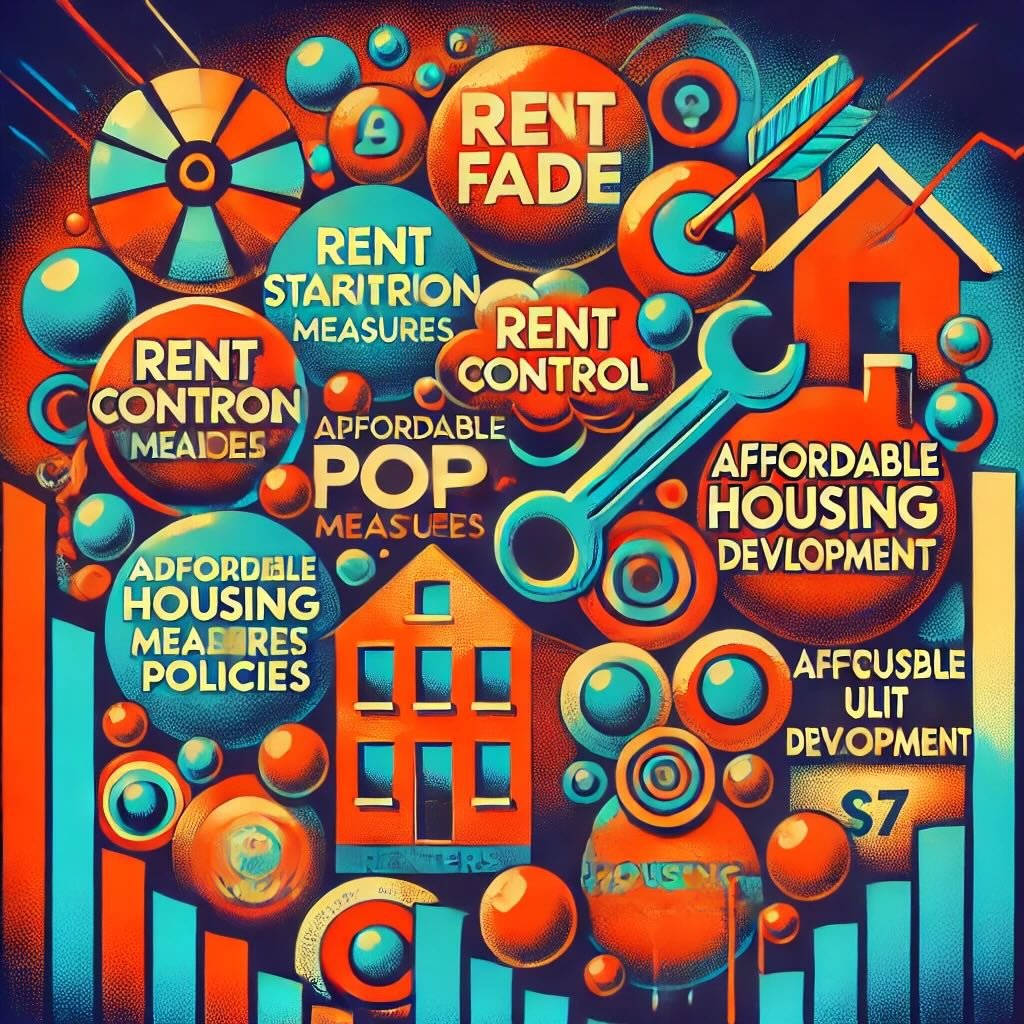
Policy Recommendations
Rent Control and Stabilization Measures
When a housing bubble starts inflating, rent control often comes to the forefront as a potential solution to protect tenants. Rent control laws are designed to cap how much landlords can increase rents within a certain period, ensuring that renters aren’t priced out of their homes due to skyrocketing market rates. This can be particularly valuable during a housing bubble, where demand drives prices up rapidly, leaving many renters vulnerable.
But rent control isn’t without its downsides. On one hand, it offers much-needed stability for tenants, helping them stay in their homes and avoid sudden financial strain. On the other hand, it can discourage landlords from maintaining or improving their properties, since they’re unable to raise rents to cover these costs. Additionally, strict rent control can sometimes lead to a reduction in available rental units, as landlords may choose to convert properties to other uses or sell them off entirely. The challenge lies in finding the right balance— ensuring tenant protection without stifling the rental market.
Increasing Affordable Housing Supply
Another critical strategy is expanding the supply of affordable housing. When the market is tight and prices are high, it’s the lower-income renters who suffer the most. To alleviate this pressure, cities and governments need to prioritize the development of affordable rental units. This can be done through a variety of means—subsidies for developers, zoning changes that encourage mixed-income developments, or public-private partnerships focused on building low-cost housing.
However, simply increasing supply isn’t enough. It’s crucial to balance market growth with social equity. Affordable housing needs to be integrated into communities, not isolated in less desirable areas. This approach helps prevent the creation of economic ghettos and ensures that all residents, regardless of income, have access to good schools, public services, and job opportunities. The goal is to create inclusive communities where everyone can thrive, even during the ups and downs of a housing market cycle.
Supporting Renters Through Financial Assistance
Rental assistance programs can be a lifeline for vulnerable renters during housing bubbles. As rents rise, these programs help bridge the gap between what renters can afford and what the market demands. By providing subsidies directly to tenants or offering tax incentives to landlords, these programs can prevent evictions and keep families in their homes.
But it’s not just about stopping evictions—it’s about supporting long-term housing security. Policies that provide financial assistance should be designed to help renters weather the storm of a housing bubble and remain stable afterward. This might include extending unemployment benefits during economic downturns, offering emergency rental assistance in crisis situations, or providing grants for renters facing unexpected financial hardships. Ultimately, the aim is to create a safety net that protects renters, particularly those at the lower end of the income spectrum, from the harshest impacts of a volatile housing market.
12-Question FAQ: What Happens to Rental Markets During a Housing Bubble?
1) What is a housing bubble—and why should renters care?
A housing bubble is a rapid, unsustainable rise in home prices driven by speculation, easy credit, and constrained supply. Renters should care because bubbles typically push more households into renting, tightening vacancy and raising rents—and the bust can disrupt rental stability in other ways.
2) How do soaring home prices spill over into rents?
When buying becomes unaffordable, would-be buyers delay purchase and rent longer, boosting demand for rentals. With limited new supply, landlords raise asking rents, trim concessions, and become more selective.
3) What usually happens to rental demand during a bubble?
Demand broadens and deepens: new grads and mobile workers rent by necessity, families rent while “saving for longer,” and investors convert units to rentals. Result: lower vacancy, faster lease-ups, and higher rents—especially in job-rich metros.
4) Do rents always rise in a housing bubble?
Often, but not always. Exceptions include:
Surging supply (e.g., large multifamily deliveries) in specific submarkets
Out-migration to cheaper regions
Policy caps (rent stabilization)
Macro shocks (job losses) that mute demand
5) How do lease terms and screening change?
Landlords gain pricing power: shorter terms, fewer concessions, stricter screening (income/credit), larger deposits, and more rent escalators. Competitive markets may even see rent bidding.
6) What risks do renters face?
Rent burden (rent >30% of income) and cost stress
Displacement/gentrification in hot neighborhoods
Longer commutes as households move outward
Increased housing insecurity if savings buffers are thin
7) How do landlords and property investors behave?
Many push for higher rents and premium amenities; some shift units to short-term rentals. Investors may overleverage on optimistic rent growth. If conditions reverse, debt pressure can trigger fire sales, deferred maintenance, or conversions.
8) What happens to rentals when the bubble bursts?
Rents can plateau or fall where vacancy rises
Distressed/overleveraged owners may cut capex, hurting quality
Some markets see vacant units as flips fail; others remain tight if employment is resilient
Good-credit tenants may negotiate concessions again
9) How does a bubble affect neighborhood change?
Faster gentrification: legacy renters priced out, small businesses turnover, and cultural displacement. Post-bust, some areas experience blight if vacancies spike; others stabilize with lower, more sustainable rents.
10) Which policies matter most for renters in bubbles?
Supply expansion: zoning reform, by-right infill, ADUs, missing-middle housing
Tenant protections: right-to-counsel, anti-gouging rules, targeted rent caps, relocation aid
Subsidies: vouchers, LIHTC/public-private affordable units
Short-term rental rules to keep units in the long-term pool
11) How can renters protect themselves?
Lock longer leases if feasible; diary renewal windows
Keep emergency savings and solid credit
House-share or consider build-to-rent communities for value
Broaden search radii, target new deliveries, and negotiate (timing matters: end-of-month/quarter)
12) What indicators should renters and investors watch?
Vacancy rate & lease-up velocity
Rent-to-income ratios and delinquency trends
New permits/starts vs. absorption
Concessions (free months) and cap rates
Employment/unemployment and migration flows
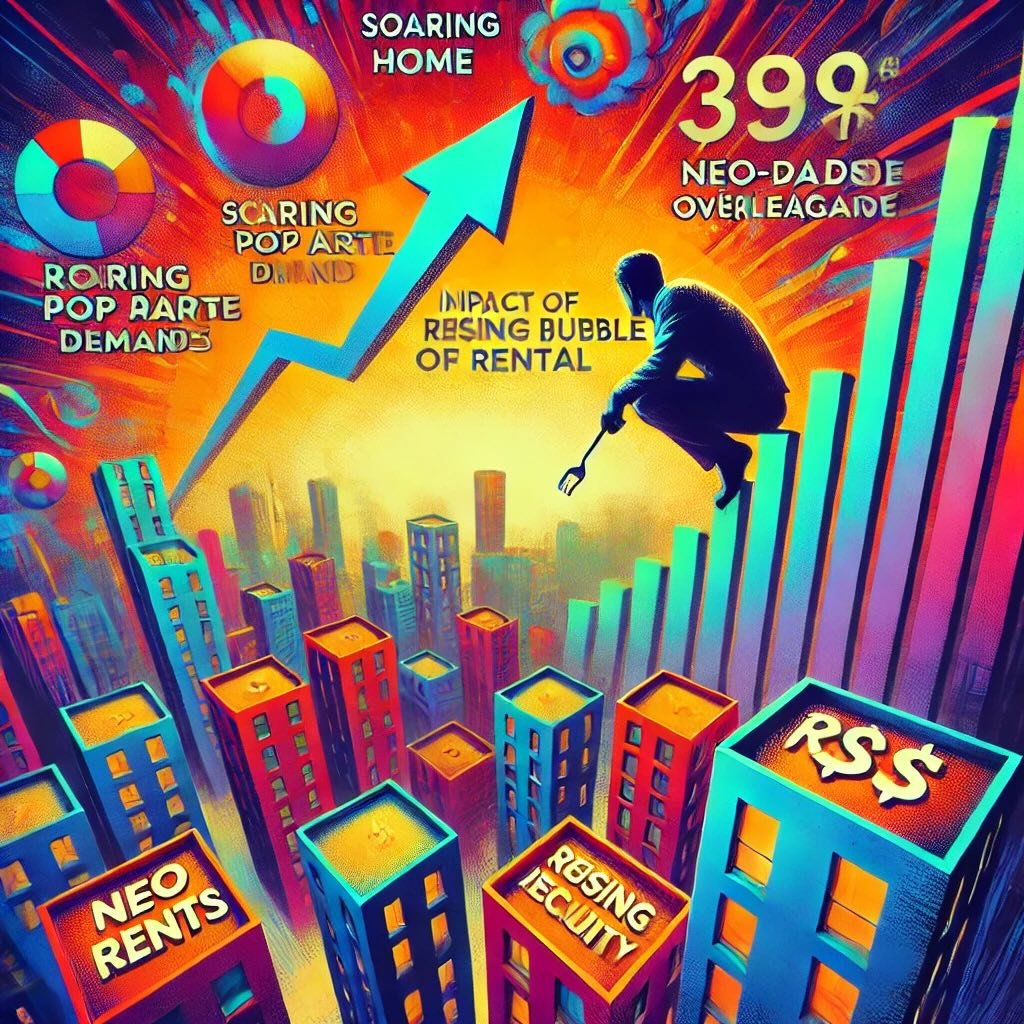
Conclusion
Housing bubbles have a way of shaking things up—and rental markets are no exception. As home prices soar, demand for rentals spikes, driving rents higher and making life increasingly difficult for renters. We’ve seen how rising rents can strain household budgets, pushing more people toward housing insecurity and displacement. Meanwhile, landlords and property investors may enjoy short-term gains, but they also face significant risks, particularly if they’ve overleveraged in a volatile market.
The broader implications are equally concerning. Gentrification accelerates, communities change, and affordable housing becomes scarcer, leaving lasting marks on urban development. And when the bubble bursts, the correction in rental markets can bring a whole new set of challenges—rents may stabilize or even decline, but the path there can be rocky, with far-reaching consequences for both renters and landlords.
Final Thoughts
As we navigate the complexities of housing markets, it’s crucial to keep rental dynamics front and center. Housing policy often focuses heavily on homeownership, but the reality is that renters make up a significant portion of the population—and they’re often the most vulnerable when a bubble forms.
A balanced, equitable approach to housing policy is essential. We need strategies that protect both homeowners and renters, ensuring that everyone has access to stable, affordable housing, regardless of market conditions. This means considering rent control where appropriate, expanding affordable housing options, and providing financial support to those who need it most.
The call to action is clear: let’s work towards a housing market that serves everyone, not just the lucky few who can ride out the booms and busts. By taking a holistic view of housing policy, we can create communities that are resilient, inclusive, and sustainable—even in the face of economic uncertainty.
Important Information
Comprehensive Investment Disclaimer:
All content provided on this website (including but not limited to portfolio ideas, fund analyses, investment strategies, commentary on market conditions, and discussions regarding leverage) is strictly for educational, informational, and illustrative purposes only. The information does not constitute financial, investment, tax, accounting, or legal advice. Opinions, strategies, and ideas presented herein represent personal perspectives, are based on independent research and publicly available information, and do not necessarily reflect the views or official positions of any third-party organizations, institutions, or affiliates.
Investing in financial markets inherently carries substantial risks, including but not limited to market volatility, economic uncertainties, geopolitical developments, and liquidity risks. You must be fully aware that there is always the potential for partial or total loss of your principal investment. Additionally, the use of leverage or leveraged financial products significantly increases risk exposure by amplifying both potential gains and potential losses, and thus is not appropriate or advisable for all investors. Using leverage may result in losing more than your initial invested capital, incurring margin calls, experiencing substantial interest costs, or suffering severe financial distress.
Past performance indicators, including historical data, backtesting results, and hypothetical scenarios, should never be viewed as guarantees or reliable predictions of future performance. Any examples provided are purely hypothetical and intended only for illustration purposes. Performance benchmarks, such as market indexes mentioned on this site, are theoretical and are not directly investable. While diligent efforts are made to provide accurate and current information, “Picture Perfect Portfolios” does not warrant, represent, or guarantee the accuracy, completeness, or timeliness of any information provided. Errors, inaccuracies, or outdated information may exist.
Users of this website are strongly encouraged to independently verify all information, conduct comprehensive research and due diligence, and engage with qualified financial, investment, tax, or legal professionals before making any investment or financial decisions. The responsibility for making informed investment decisions rests entirely with the individual. “Picture Perfect Portfolios” explicitly disclaims all liability for any direct, indirect, incidental, special, consequential, or other losses or damages incurred, financial or otherwise, arising out of reliance upon, or use of, any content or information presented on this website.
By accessing, reading, and utilizing the content on this website, you expressly acknowledge, understand, accept, and agree to abide by these terms and conditions. Please consult the full and detailed disclaimer available elsewhere on this website for further clarification and additional important disclosures. Read the complete disclaimer here.




